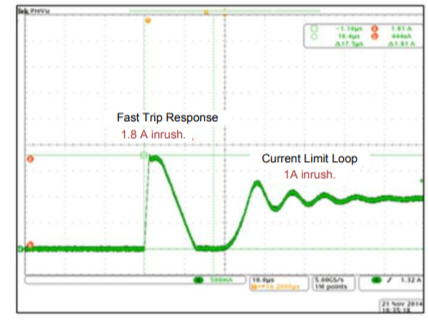Hi team,
My customer is evaluating the TPS4H000-Q1. Could you support the following questions?
1. The d/s states that the recommended nominal DC load current is 0.75A(max). Is it acceptable to satisfy 0.75 A with average current or RSM current(not DC)? If it's ok, how much current does the device can handle? I believe that the device can handle the current within the limits of current limit(ICL) and TSD.
2. Could you let me know the current limit response time? Is it 1us(typ)?
Regards,
Yamaguchi


